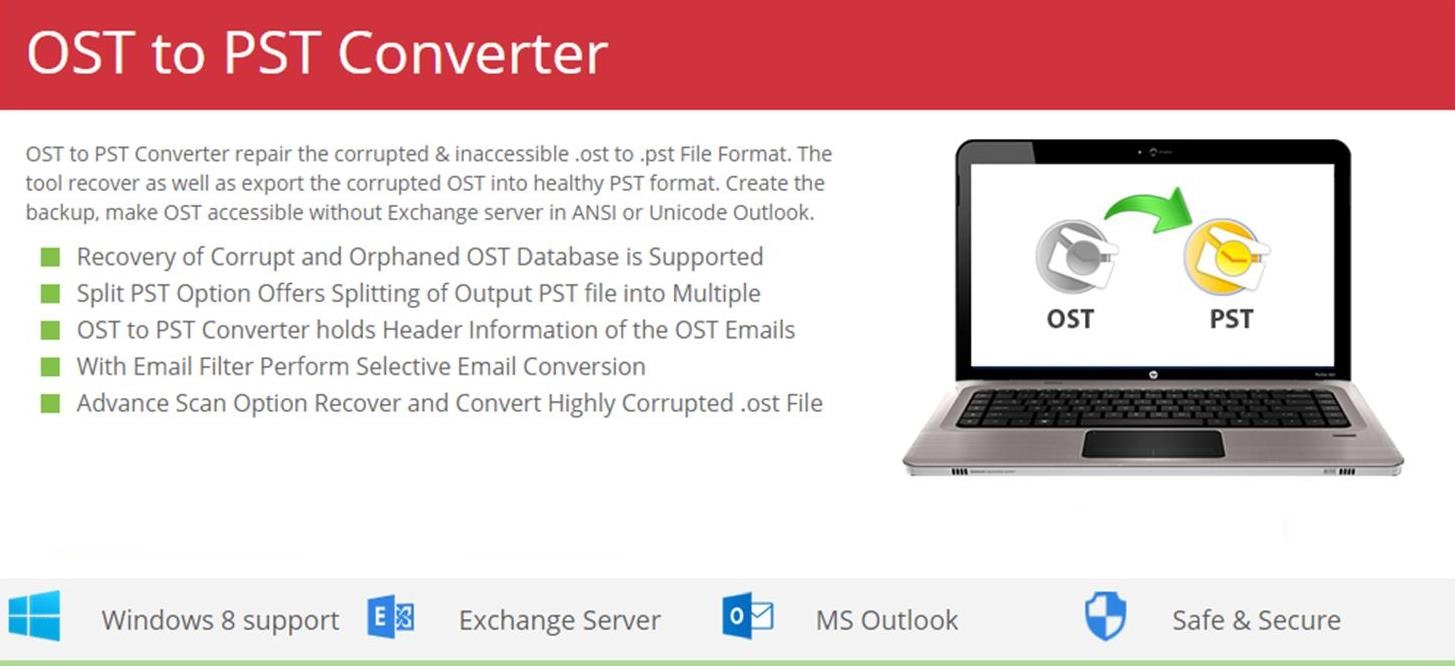When do Users Require the need to Convert Exchange OST TO PST?
While it is popularly known that users can make use of OST files in order to restore or recover deleted or corrupted mailboxes of Exchange server. Reason being OST files are considered to be replicas of mailbox stored in Exchange server. But what can you do if your OST files itself get corrupted? Is there no other way out to recover the information present in OST files? Well here, we are going to discuss the methods which increases the possibilities of recovering data from corrupted or damaged OST files. But before that let us get an insight on how the OST files become corrupted or damaged and then possible solution for how to recover them in the best possible way.
Reasons for OST files becoming Orphaned or Damaged
1) Corruption of OST files due to virus
OST files present in Outlook can get corrupted due to virus or malware. Here, a possible solution which you can try with is to delete the OST file then create a new one and again synchronize the OST file with the mailbox of Exchange server. Let us discuss the procedure in details:
First disable the offline mode for Outlook by navigating to the service properties dialog box of Microsoft Exchange
Then delete the OST file present in the Outlook profile
Then again open outlook, move to the service properties form of Exchange server and again enable the offline mode.
Here, Outlook will ask for the confirmation in order to create a new OST file or not.
Again start with the procedure of synchronizing the mailbox with the empty OST file.
2) Deletion or Recreation of Exchange Server Mailbox
When a user or system administrator deletes or again creates a new mailbox, the master ID concerning it is also changed. Although the account name, alias name or even account properties match but when they try to connect to server, the master ID of the mailbox will not match with that of the data present in the outlook profile. As, a result Outlook will not load the OST. This is because OST files are created when a user configures a MAPI profile with the Exchange server in enabled cache Exchange mode.
So, when the mailbox is deleted, the connection breaks and user is not able to access the OST files. In other words we can say that the synchronization between the OST file and the Exchange server mailbox breaks. The only possible solution which a end user can try around is to rebuild the OST file. If a user is considering to rename or delete the file then possibility is there to lose all those unsynchronized items like emails, appointments which the user has created in his Outlook profile but has not synchronized it successfully to the Exchange server. In this case, user should consider deleting or renaming the OST file as one of the last option.
3) Trying to Access OST files other than the Default Outlook Profile
Sometimes user may be interested to open the OST file in some other Outlook profile other than the default one. In such a case, user won’t be able to access the OST file. It is because an OST file is tied to a particular MAPI profile. If a user doesn’t log in or validate by using the Outlook profile which was used to create it originally then the Outlook will decline to access it.
The reason for such kind of action is due to the fact that the original Outlook profile saves an encrypted cookie which was created by the unique ID of mailbox. This unique ID can be approached only when there is a connection with the server. Each time a user makes an attempt to work in off-line connection, it first checks to find whether that encrypted cookie is present or not. If it doesn’t find it in that Outlook profile the OST will decline to load in that Outlook profile.
Here, what a user can do is delete and recreate the server mailbox once again. But that is again a time-taking procedure.
4) Complete Solution to Address Your Concerns
In all the cases presented above if a user wants immediate access to the data present in OST files. Then one of the possibleefficient approach is to convert the Exchange OST into PST files and then access those data in any of the Outlook profile as PST files are not MAPI based. To convert the OST files into PST files one needs to go for a third-party solution. One such solution is OST to PST Converter which provides a commendable solution for recovering the orphaned, corrupted or damaged OST files and converts them into PST file format.



